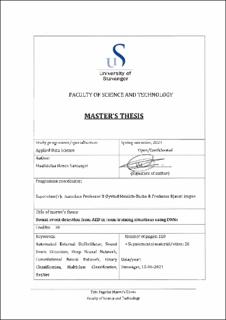Sound event detection from AED inteam training situations using DNNs
Abstract
Cardiovascular diseases are the second most common cause of deaths in Norway in 2019. An increase in out-of hospital cardiac arrests cases due to an increase in reported cases in Norway between 2013 and 2018 has also been reported. The need for training health care professionals in delivering cardiopulmonary resuscitation(CPR) contributes significantly to safe care. The coordination of actions and skills during CPR impacts the survival of patients. Currently, mannequins developed by Lærdal Medical AS and used for team training events cannot detect sound events that originate from external sources.The primary objective of this thesis is to use machine learning and deep neural net-works(DNN) to automatically detect specific causes of different pauses during team training to support debrief. The automated external defibrillator(AED) audio clipsare provided by Lærdal Medical AS. Background noise(audio clips) are overlaid on the AED audio clips to form close to realistic audio from team training scenario. Audio clips are converted to log-scaled mel spectrograms to form the final datasets. Four DNN architectures have been used; two convolutional neural networks, one convolutional recurrent neural network(CRNN) and pretrained ResNet18. In addition, two binary classification methods and a multiclass classification is experimented on six distinct AED audio classes.Binary classification of AED audio using ResNet18 gave the best overall accuracy of 86,7 percent and an F1 score of 0.85. This model is further proposed in a final system forfurther development and implementation in the real world.
